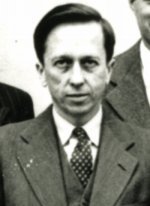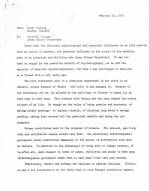|
Today we have computers to run mathematical equations as complex as the wave functions
Pauling was trying to solve in 1928. In precomputer days it was almost impossible.
Like every theoretician working to apply wave mechanics to complex systems, Pauling
was forced to find shortcuts, to make assumptions and approximations, to simplify
the mathematics.
He was not the only one facing the problem. The same mathematical complexity was stalling
London and others interested in the field. The difference with Pauling was that he
was confident enough that the mathematics would fall into place to publish his preliminary
thought, thus ensuring scientific priority. He then set his graduate student, Sturdivant,
an able mathematician in his own right, to work on the tetrahedral-wave-function problem.
When Sturdivant got nowhere after weeks of work, Pauling, now on to other problems
set the carbon problem aside.
|
|
Click images to enlarge

J. Holmes Sturdivant. 1950.

"Memorial Message -- James Holmes Sturdivant." February 19, 1975.
"[P.W.] Bridgman . . . would say that a question that does not have operational significance,
that does not lead to an experiment of some sort, or an observation, it's significant.
I never have been bothered by the detailed or penetrating discussions about interpretation
of quantum mechanics."
|

